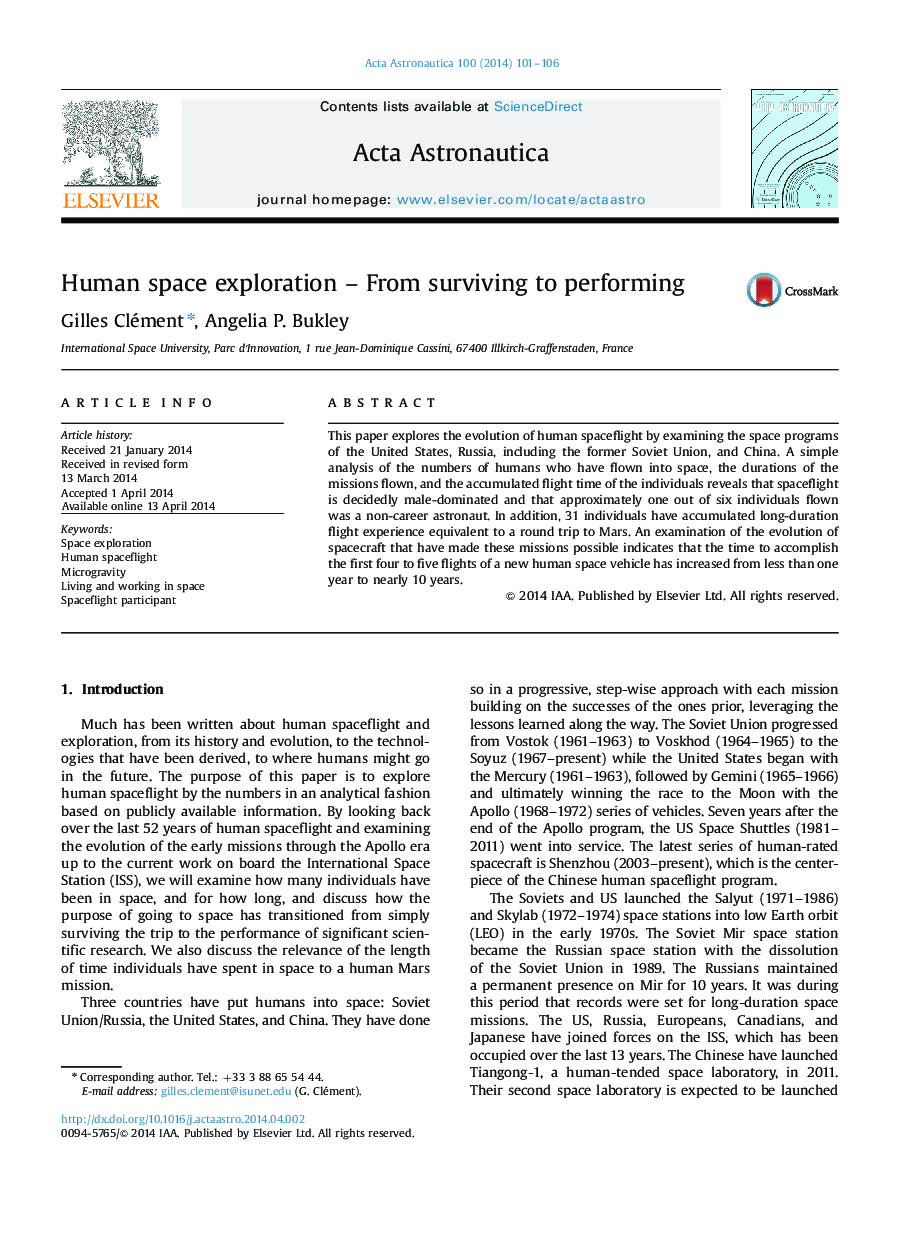| Article ID | Journal | Published Year | Pages | File Type |
|---|---|---|---|---|
| 1714543 | Acta Astronautica | 2014 | 6 Pages |
Human spaceflight missions have progressed from surviving to living to working to performing in space.The number of non-career astronauts is much larger than commonly believed.Some astronauts have accumulated by several missions enough time in space to complete a trip to Mars and back.
This paper explores the evolution of human spaceflight by examining the space programs of the United States, Russia, including the former Soviet Union, and China. A simple analysis of the numbers of humans who have flown into space, the durations of the missions flown, and the accumulated flight time of the individuals reveals that spaceflight is decidedly male-dominated and that approximately one out of six individuals flown was a non-career astronaut. In addition, 31 individuals have accumulated long-duration flight experience equivalent to a round trip to Mars. An examination of the evolution of spacecraft that have made these missions possible indicates that the time to accomplish the first four to five flights of a new human space vehicle has increased from less than one year to nearly 10 years.
